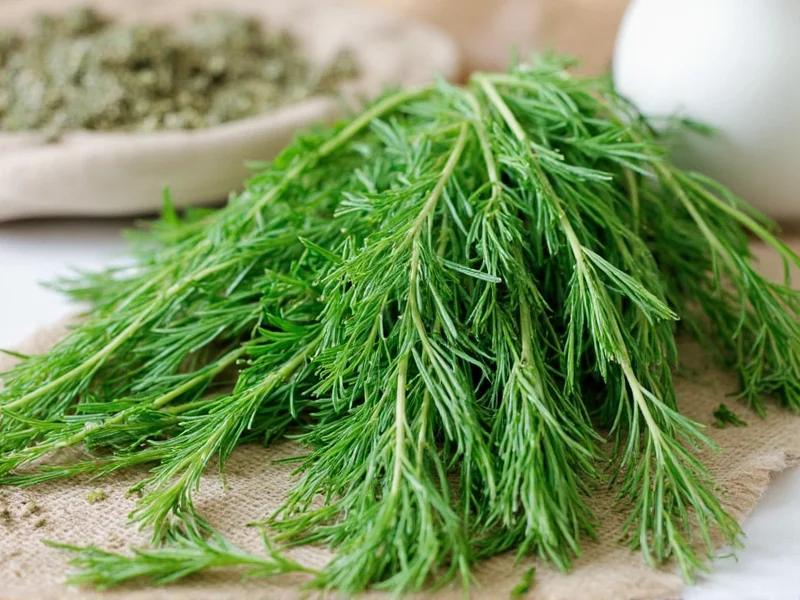Understanding herb pairings can transform your cooking from ordinary to extraordinary. Dill, with its delicate, grassy flavor and subtle anise notes, is a versatile herb that works beautifully in numerous culinary applications. When selecting complementary herbs, it's essential to consider dill's relatively mild intensity compared to bolder herbs like rosemary or thyme.
Top Herb Combinations That Enhance Dill's Flavor
Dill's unique flavor profile makes it an excellent partner for several other herbs, creating balanced combinations that work across various cuisines. The key to successful herb pairing lies in understanding flavor intensities and complementary notes.
Parsley and Dill: The Classic Combination
Flat-leaf parsley provides a clean, slightly peppery counterpoint to dill's subtle sweetness. This pairing works particularly well in fish dishes with dill and parsley sauce and forms the foundation of many Scandinavian and Eastern European preparations. The combination maintains freshness without overwhelming the delicate flavor of fish or vegetables.
Chives: Adding Mild Onion Notes
Fresh chives introduce a gentle onion flavor that complements dill's grassiness without dominating. This pairing shines in herb combinations with dill for salad dressings, potato salads, and creamy dips. The mild onion notes from chives create depth while allowing dill to remain the star flavor.
Tarragon: An Unexpected but Perfect Match
While tarragon has a more pronounced anise flavor than dill, the two herbs share enough flavor compounds to create a harmonious blend. This combination works beautifully in dill and tarragon flavor pairing for chicken dishes and certain seafood preparations. Use a 2:1 ratio of dill to tarragon to prevent the stronger herb from dominating.
Mint: Creating Refreshing Combinations
Dill and mint create an unexpectedly refreshing combination that works well in summer dishes. This pairing excels in fresh herb combinations with dill for summer dishes, particularly in cucumber salads, yogurt-based sauces, and certain Middle Eastern preparations. The mint adds brightness while dill provides depth.
Cilantro: For Bold Flavor Profiles
While seemingly disparate, dill and cilantro can work together in specific applications, particularly in fusion cuisine. This combination shines in herbs that go well with dill in pickling certain vegetables and in some Asian-inspired fish preparations. Use cilantro sparingly when pairing with dill to maintain balance.
Regional Herb Pairing Traditions Featuring Dill
Dill has been used in various culinary traditions around the world, each developing signature herb combinations that highlight its unique qualities.
| Regional Cuisine | Signature Herb Pairings | Common Applications |
|---|---|---|
| Scandinavian | Dill + parsley + chives | Gravlax, fish sauces, potato salads |
| Eastern European | Dill + parsley + mint | Borscht, pickled vegetables, cold soups |
| Mediterranean | Dill + oregano + mint | Yogurt sauces, vegetable dishes, grilled fish |
| Middle Eastern | Dill + mint + cilantro | Tzatziki variations, rice pilafs, stuffed vegetables |
Practical Applications for Dill Herb Combinations
Fish and Seafood Preparations
Dill's traditional pairing with fish benefits from complementary herbs that enhance rather than compete. For best herbs to pair with dill in fish recipes, try combining dill with equal parts parsley and a smaller amount of chives. This combination works particularly well with salmon, trout, and white fish. Add the herbs during the last few minutes of cooking to preserve their delicate flavors.
Salad Dressings and Dips
When creating which herbs complement dill in salad dressings, consider a 3:2:1 ratio of dill to parsley to chives. This combination provides complexity without overwhelming the dressing's acidity. For creamy dips, add a small amount of fresh tarragon (about 1/4 the amount of dill) to create a more sophisticated flavor profile that works well with crudités or as a sandwich spread.
Pickling and Preserving
Dill is a staple in pickling, but adding complementary herbs can elevate your results. For herbs that go well with dill in pickling, try combining dill with small amounts of tarragon and mint. The tarragon adds complexity while the mint provides a subtle freshness that complements the vinegar base. Use fresh dill heads (the flower clusters) for the most authentic pickling flavor.
Expert Tips for Combining Dill with Other Herbs
- Timing matters: Add delicate herbs like dill at the end of cooking to preserve their flavor, while heartier herbs can be added earlier
- Fresh vs. dried: When substituting dried dill for fresh, use one-third the amount, as dried herbs are more concentrated
- Ratio guidance: For most applications, use dill as the primary herb (50-60%), with complementary herbs making up the remainder
- Balance intensity: Pair dill with other mild herbs rather than strong ones like rosemary or sage which will overpower it
- Taste as you go: Herb potency varies based on growing conditions and freshness, so adjust quantities accordingly
Common Mistakes to Avoid When Pairing Herbs with Dill
Many home cooks make these critical errors when working with dill and complementary herbs:
- Overpowering dill with stronger herbs like oregano or thyme
- Adding dill too early in the cooking process, causing flavor loss
- Using dried dill in applications that specifically require fresh (like cold sauces or salads)
- Not considering the dish's other ingredients when selecting complementary herbs
- Using too much of complementary herbs, creating imbalance rather than harmony
Seasonal Considerations for Dill Herb Pairings
Dill's flavor profile changes slightly throughout the growing season, affecting how it pairs with other herbs. In early summer, dill has a more delicate flavor that works well with subtle herbs like chives. As summer progresses, dill develops more pronounced flavor notes that can handle slightly stronger companions like tarragon. Understanding these seasonal variations helps create the most harmonious fresh herb combinations with dill for summer dishes.











 浙公网安备
33010002000092号
浙公网安备
33010002000092号 浙B2-20120091-4
浙B2-20120091-4